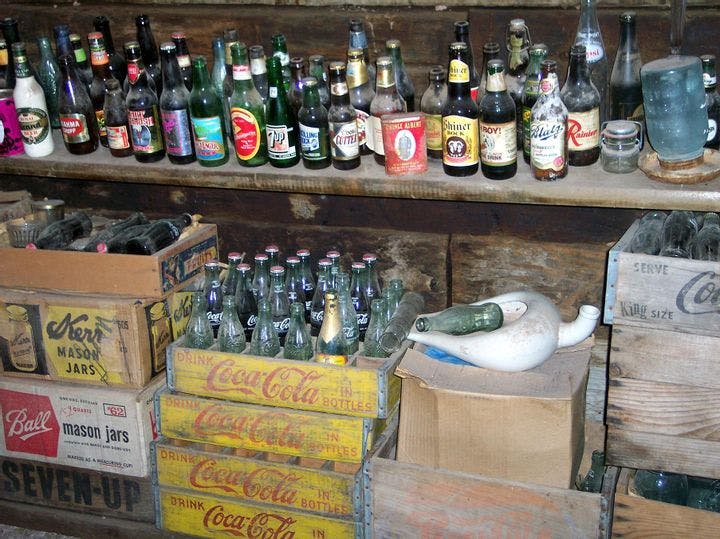Summer 2010
Up to Here
– Darcy Courteau
Hoarders' connection to objects is so real that some have committed suicide after forced cleanups.
On the entire spectrum of vice, compulsive hoarding registers toward the innocuous end. Who doesn’t have a drawer full of faded T-shirts or old rubber bands? Still, in its most extreme forms the phenomenon is repulsive enough that it’s a natural for reality TV. Last year A&E premiered Hoarders, which features homes pregnant with debris and agitated occupants who have been given the ultimatum—by landlords or health inspectors—to clean up or move out. A woman stalls a cleanup crew for hours, demanding that they recover a treasured piece of broken floor tile they’ve misplaced. Amusing. But then come the long-suffering spouses who pick their way, Daniel Boone–like, through “goat paths” on the way to bed. When the camera films a woman asking Mom if a broken vacuum cleaner and its dander-filled companions are more important than family, the problem ticks, on our vice spectrum, a shade closer to perdition. Buried as we are in a glut of cheap goods, clutter is the rule, but we draw the line at ankle deep. More than that, and you’ve got problems.
Well, yes and no. Obsessive-compulsive disorder (OCD) specialists Randy Frost and Gail Steketee take a philosophical approach in their engaging and surprisingly cheerful study Stuff. Frost, a psychologist, narrates several representative cases. (Steketee, a social worker, contributed to the “conceptual work,” but most of the fieldwork is Frost’s.) The collections that brought the woman they call Irene to financial ruin and broke up her family are ho-hum in comparison to Ralph’s house, in which the bathtub is so full of scavenged detritus that he showers at a pool at the local college. These folks require interventions such as the “experiment,” in which hoarders throw out an inconsequential item, then track their diminishing emotional pain until—in the best cases—each subsequent purge becomes easier. The clinician’s tone remains imperturbable, though the authors do allow themselves a dusting of deadpan humor: Irene, encouraged to experiment with tossing a newspaper, first shakes from its pages an envelope containing $100. “This wasn’t exactly the outcome I’d expected,” Frost writes.
Hoarders' connection to objects is so real that some have committed suicide after forced cleanups.
Between six and 15 million Americans obsessively collect, and, contrary to popular notion, they are not always elderly. Frost and Steketee report an “average age of just over 50” among their subjects, many of whom described hoarding symptoms from early in life; other hoarders are in elementary school. Hoarders’ pathologies, often exacerbated by past trauma, are many, and can include OCD (which drives the collecting), attention deficits that prevent organization (an item out of sight is out of mind), paralyzing perfectionism (organizational standards, set impossibly high, end up abandoned altogether), and a childlike avoidance of the discomfort associated with discarding things.
Yet, the authors argue, there is more to the picture. Hoarders’ style of consumption is different from that of status seekers: “Objects become part of who the hoarder is, not the façade he or she displays to the world.” The connection to objects is so real that several hoarders have committed suicide after forced cleanups. Items are cherished for the utility and possibilities they represent; Ralph will not part with a leaking bucket as long as he can imagine alternate uses for it. An “inordinate number of hoarders describe themselves as artists,” the authors observe, adding, “Maybe hoarding is creativity run amok.”
The modern world tends toward abstraction. Files are stored not in cabinets but in information “clouds.” People who once earned a living making things now look for work. Against this backdrop, there is a heroic element to the “de facto archivists of objects others have left behind, inverted versions of materialists who crave the new.” Indeed, it is the collector of leaking buckets who knows what succor the right piece of trash could bring to a person in need—of a needle, a knife blade, or the unrotted portion of a potato.
* * *
Darcy Courteau is an editorial assistant at The American Scholar. Her fiction and essays have appeared, most recently, in New Orleans Review and Oxford American.
Reviewed: Stuff: Compulsive Hoarding and the Meaning of Things by Randy O. Frost and Gail Steketee, Houghton Mifflin Harcourt, 290 pp, 2011.
Photo courtesy of Flickr/David Saddler
Up next in this issue
